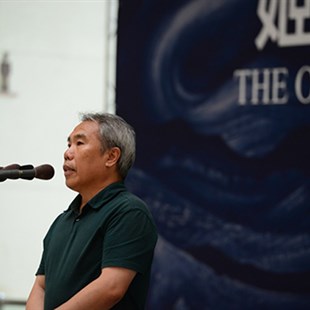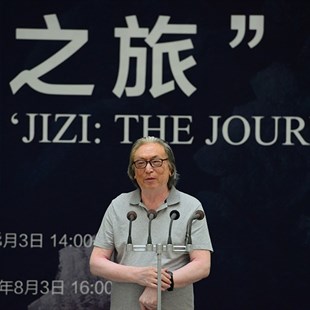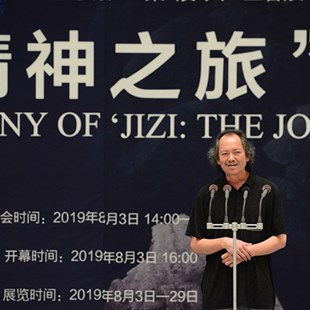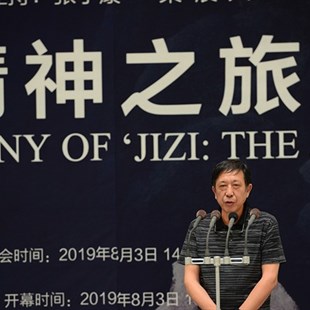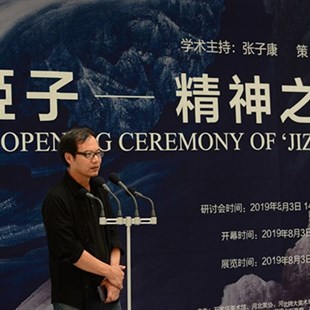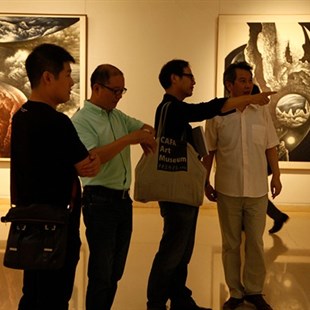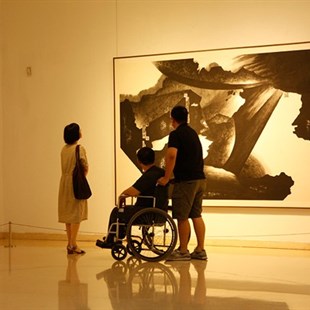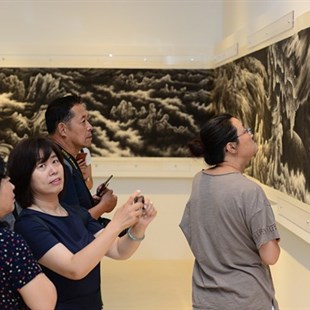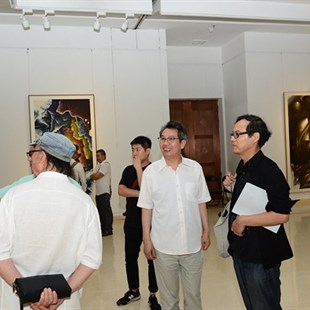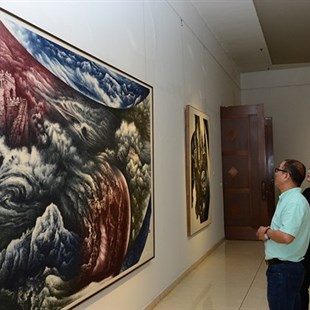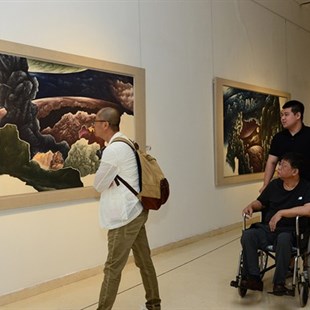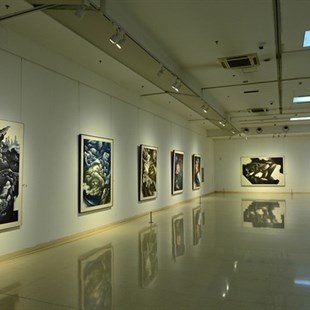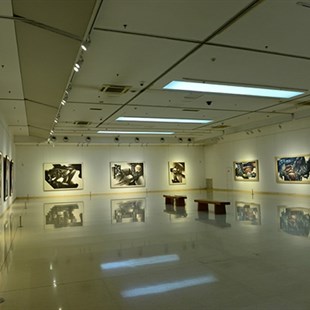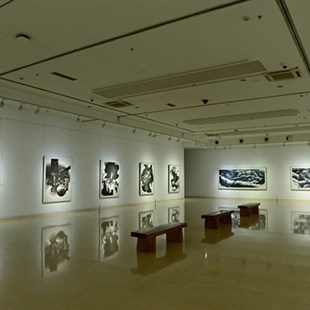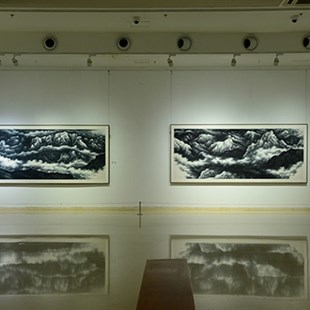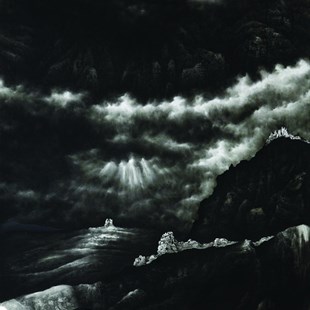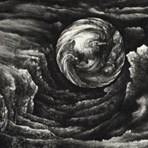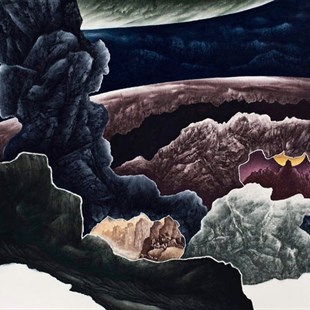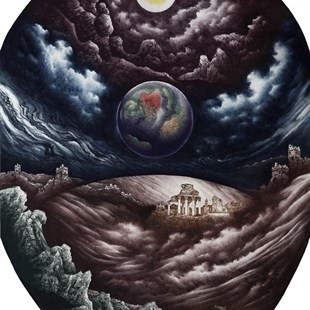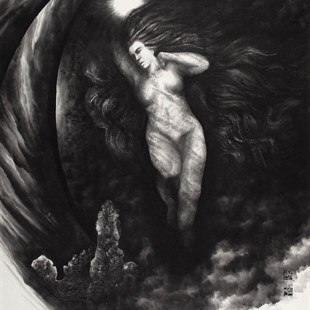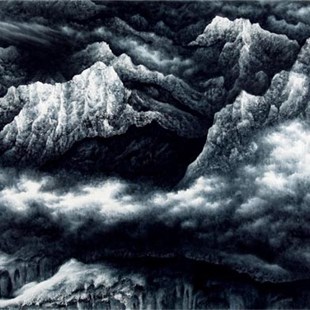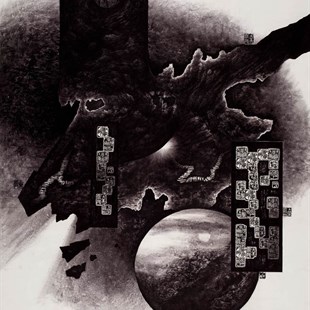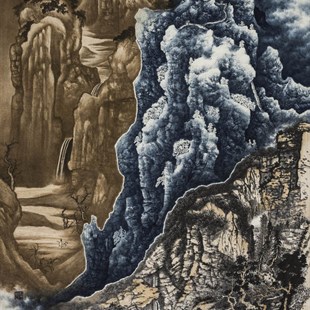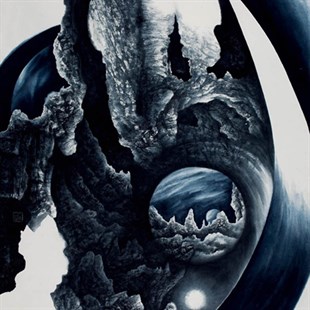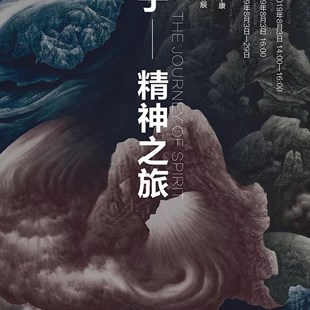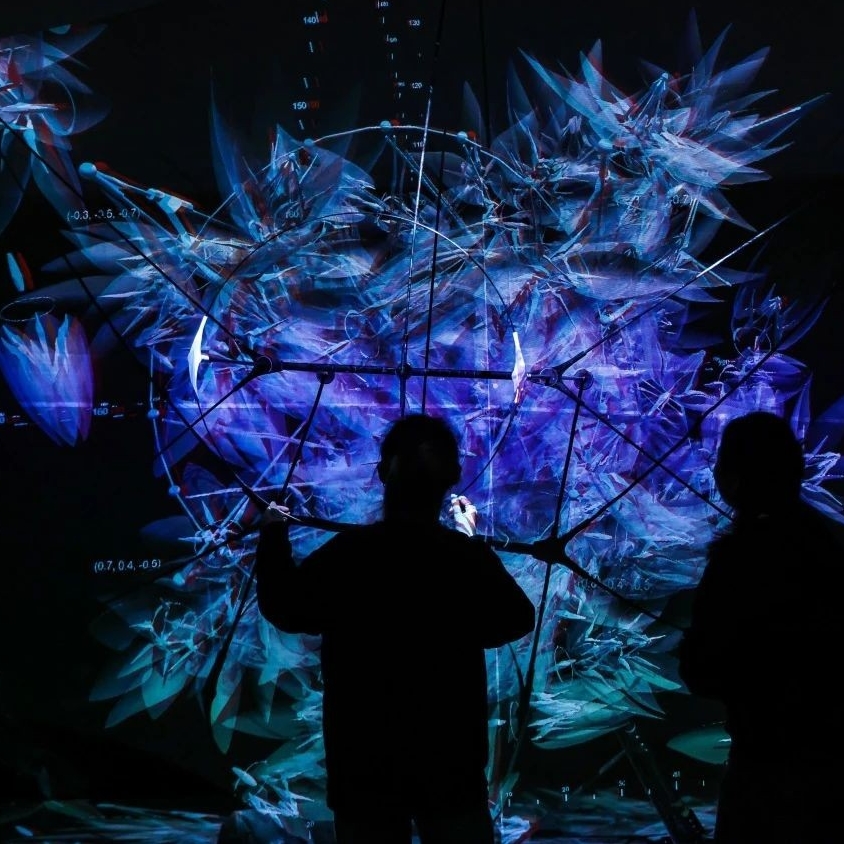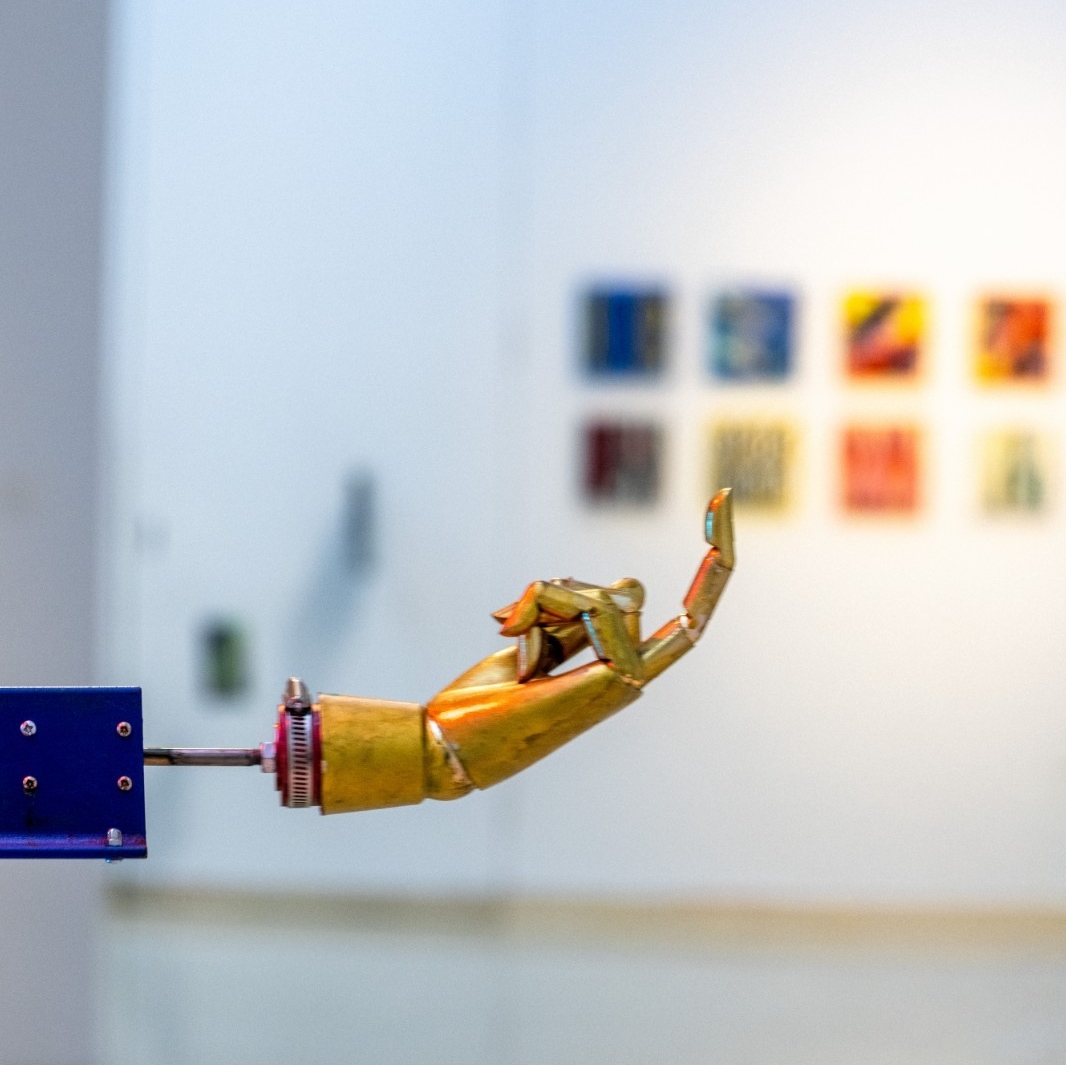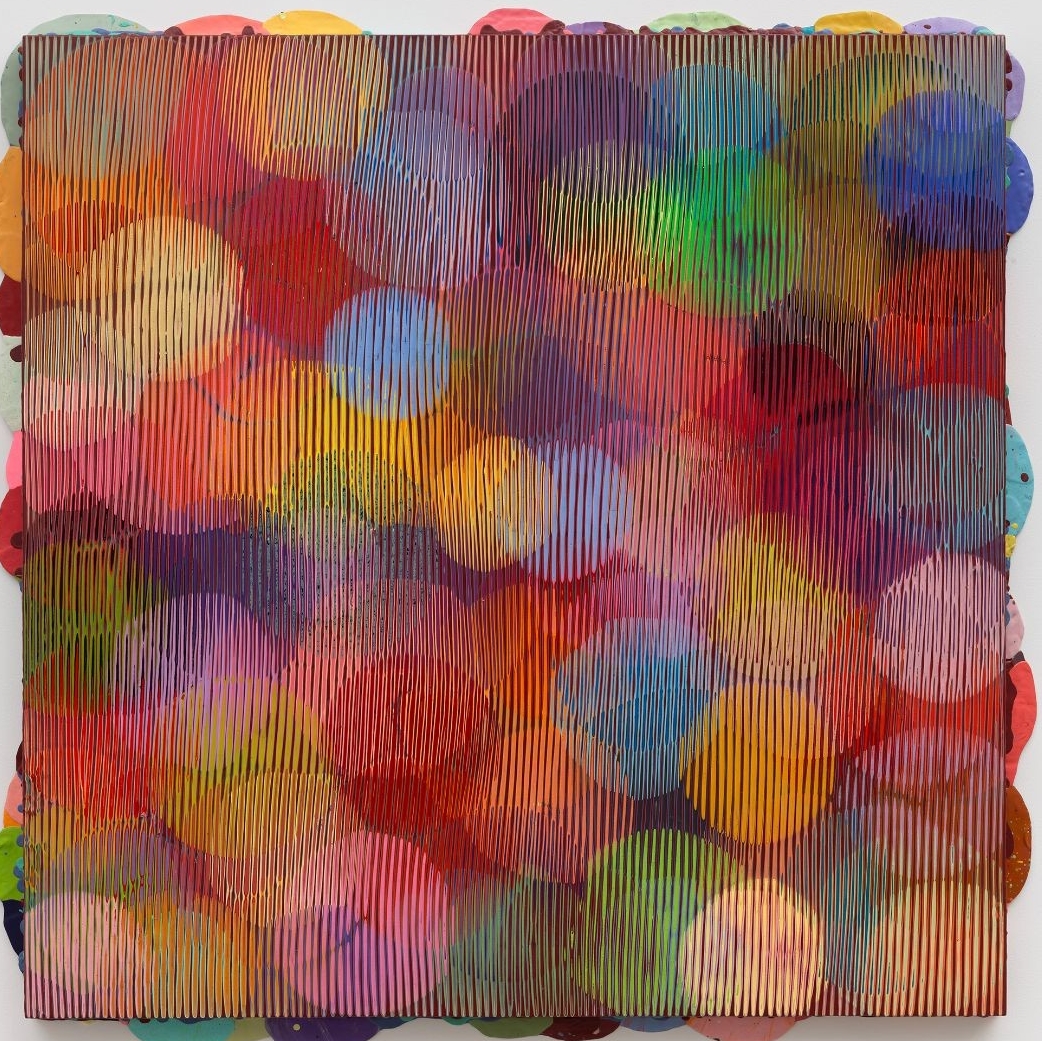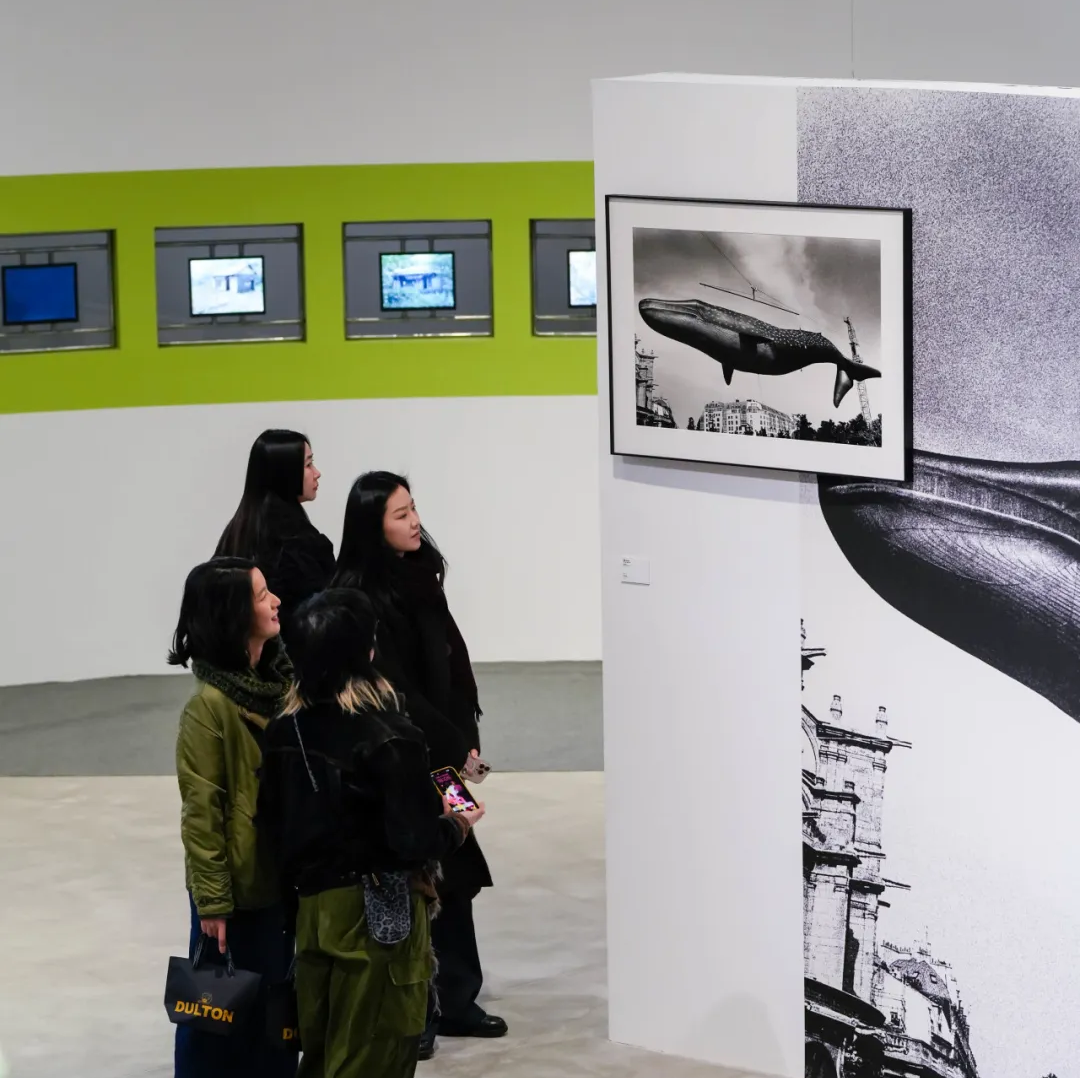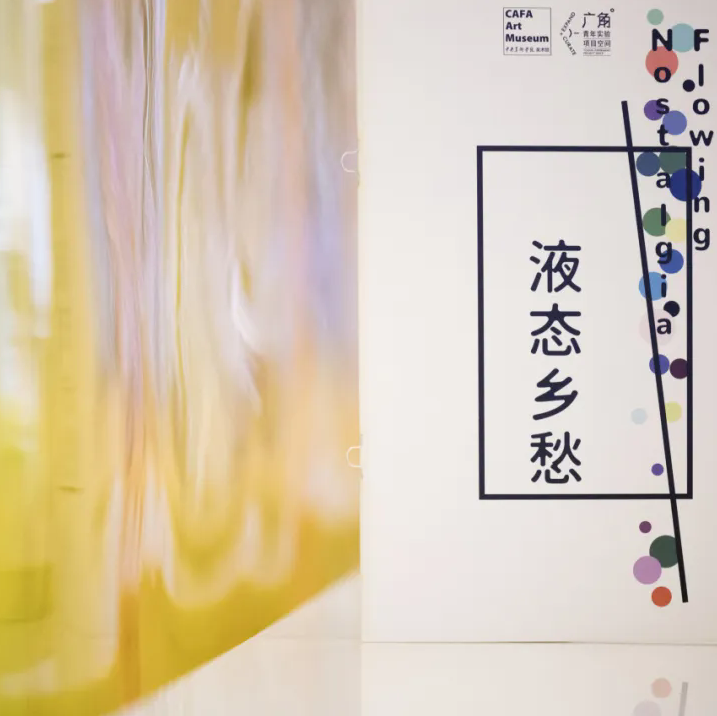
A Modern Exploration of A Chinese Landscape Painter: “Ji Zi – The Journey of Spirit” is Revealed in Hebei
Nowadays, artist Ji Zi is a special case in the field of Contemporary Chinese Ink. Different from current types of creation, Ji Zi’s works have become a style of Chinese contemporary art creation and has become a case for continuous discussion in the international field. Critics such as Arthur C. Danto noticed the unique value of his paintings. His works were exhibited in various museums in the USA and Britain as the contemporary practice of Chinese artists that are to be observed.
On 3rd of August, 2019, Ji Zi’s solo exhibition “Ji Zi – The Journey of Spirit” commenced in Shijiazhuang Art Museum in Hebei. It is the first time that the artist has an exhibition in the homeland to display his artworks and review related archives academically. The exhibition is co-organized by the Hebei Artists Association and the Shijiazhuang Art Museum, showcasing 33 works in the artist’s final years. Zhang Zikang serves as the academic host, and Wang Chunchen serves as curator.
The exhibition, as a retrospect of the artist’s journey in terms of art creation, showcases a tribute by institutions based in the artist’s hometown on the third anniversary of the artist’s death. It also provides an art creation field and theoretical circles with an opportunity to reflect on contemporary Chinese paintings. Xu Li, Vice President of the Party Committee of the Chinese Artists Association, sent a congratulatory letter to the opening ceremony. He commented that Mr. Ji Zi is adept at integrating traditional Chinese philosophical thoughts in his paintings. He used them as the cornerstone for his art creations, thus exploring a unique way to transform traditional Chinese painting, namely, “Ink Realm of Landscape Painting” (Mo Dao Shan Shui, 墨道山水). This enhanced the international understandings of Chinese art in the new era.
Professor Wang Shaojun, Deputy Secretary of the Party Committee of the Central Academy of Fine Arts, gave a speech at the opening ceremony. He concluded that the most significant contribution of Mr. Ji Zi is his spirit. His art is spiritual in nature. Although he uses traditional Chinese painting as the intermedia, instead of following the classical road, he pursued a mental exploration and reflected on the universe and life. What is behind Mr. Ji Zi’s artworks is a human vision and an attitude towards the seeking of personal spirits.
In the opening ceremony, Critic Jia Fangzhou mentioned that Mr. Ji Zi has achieved a breakthrough in the field of landscape painting. He not only used the concept of “Tao” to examine the nature of heaven and the earth, but also constructed a sense of structure beyond the landscape to create a sense of the times.
This is the most important topic in the art world when discussing the art of Ji Zi. It is also the most intuitive and emotional understanding of audiences when looking at the paintings of Ji Zi. By observing his works, audiences could understand them as paintings using Chinese ink as the intermedia and explore some special techniques in traditional Chinese paintings such as “Cun (皴)” and “Dyeing (染). However, at the same time, the entire aesthetic of his works is distinguished from the traditional Chinese landscape and even contemporary ink paintings. It constitutes the particular nature of Ji Zi’s art.
Born in Hebei in 1941, artist Ji Zi was interested in painting from an early age. However, he neither studied in a professional art school nor worked in any art institutes due to his own situation. He learned traditional ink paintings himself, concentrating on the “Northern School Landscape (Bei Pai Shan Shui, 北派山水)”, based on his personal interest and enthusiasm. Later on with an increase in the trend in traditional ink paintings, he developed his own unique art style to create artworks. It is such “amateur” art path that has made Ji Zi’s art of today and also allowed the current art field to reflect on the term “professional”. Since modern times, there have been several styles in terms of the development of Chinese Painting, namely, realistic ink paintings advocated by Xu Beihong and Jiang Zhaohe, the formalistic ink paintings represented by Lin Fengmian and Wu Guanzhong and the conceptual ink paintings practiced by Gu Wenda among others.
From art critic Wang Duanting’s perspective, he believes that Ji Zi does not belong to any of these categories. Instead, his art showcases an exploration between the formalistic ink paintings and the conceptual ink paintings. He depicted an existence in parallel to nature. Apparently, starting with the traditional ink paintings, especially the “Northern School Landscape”, Ji Zi developed his artistic style by undergoing a modern transformation. Chao Xiaoxin concluded that Ji Zi had realized a successful shift from the panoramic landscape in the Song Dynasty towards a modern style. On the one hand, he represented a contemporary spirit; on the other hand, he developed a form of language with a style of “rich, black, dense and thick (浓,黑,密,厚).
Since the twentieth century, the development of Chinese art cannot avoid the modern context. Born in traditional Chinese culture, the Chinese Painting shares the same context. The aesthetics of formalism from western countries, the conceptual expression and the contemporary aesthetic interest have jointly constituted Ji Zi’s art creation. Mr. Yin Shuangxi commented on Ji Zi’s paintings that his works not only express the singularity of the ancient ruins but also represent the loneliness of modern Sci-Fi movies. Many spectators gain this sort of "magic feeling" in Ji Zi's art. Using mountains, water and clouds etc. as the main symbols and transforming many western artistic elements, Ji Zi created his works by integrating components of Chinese Painting with western structures and the surrealism concept as well as his unique treatment of light and color. It is the core value of Ji Zi’s paintings, which reveals the direction of Chinese Paintings – when pursuing the creation and epochal character, it should not restrict the inner system of Chinese culture.
Artist Ji Zi experienced the realism movement of Chinese Painting in the 1950s, the modernism transformation of ink paintings in the 1980s and the birth of the experimental ink paintings in the 1990s. Due to his lack of the study in a professional art academy, Ji Zi could only follow his own understanding regarding the transformation of Chinese Paintings and the creation of modern landscape paintings and eventually form his own artistic route. This is also the true essence of Ji Zi’s “journey of spirit” – he explored his own position within the trend of western modernism, Chinese experimental ink paintings and the new literati paintings. He also responded to the question of “the direction of ink paintings in this new era” by proposing the notion of “the Ink Realm of Landscape Painting” and “the Absence of Form in Ink Paintings (Shui Mo Wu Xiang, 水墨无相). His art expresses a fusion of the inner life of individuals and the spirit of the universe.
“Ji Zi – The Journey of Spirit” exhibits artworks created in Shang Yuan Painter Village in Beijing (北京上苑画家村) after 2000, which are the most representative works that express Ji Zi’s concept of “Tao”. The exhibition depicts a contemporary encounter of Chinese and western art and reflects on the value of the existence of Chinese Paintings. Unfortunately, artist Ji Zi died in 2015 and ended his journey of the spirit. However, his “Ink Realm of Landscape Painting” can still be shared with the public. His art creation is always a unique case study in terms of researching ink paintings in the current situation.
The exhibition is open to the public till the 29th August, 2019.
Text by Zhang Wenzhi
Translated by Emily Weimeng Zhou
Edited by Sue/CAFA ART INFO
Photo courtesy of the organizer


